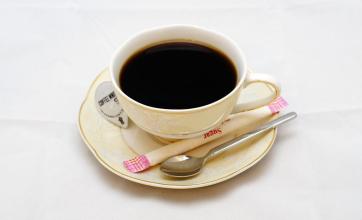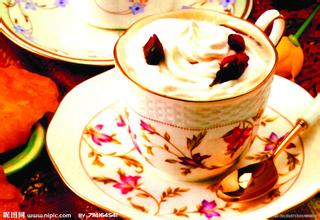Flavor description of Yejiaxuefei Coffee Bean introduction to the taste of variety treatment in grinding scale production area
Flavor description of Yejiaxuefei Coffee Bean introduction to the taste of variety treatment in grinding scale production area
The geographical environment of Ethiopia is very suitable for coffee growth. Currently, about 25% of the Ethiopian population depends directly or indirectly on coffee production for a living. Since most local farmers still care for coffee trees manually and do not use harmful pesticides and herbicides, most of the coffee produced in Ethiopia is organic. 35% of the coffee is courtyard coffee. In this kind of coffee garden, the planting is three-dimensional, and the coffee is located in the lower layer, and the suitable growth environment is obtained in the shade of other crops. Fertilizers are mainly fallen leaves, withered grass and animal manure.
5% of the coffee belongs to plantation coffee. This is a modern way of growing coffee, which grows into forests, but uses new varieties and is planted in rows with other shade trees.
The place where Yega Xuefei is planted can be said to be a paradise on earth, a small mountain village, full of weapons, like spring all the year round. Even in summer, there is a gentle breeze, cool but not hot. The comfortable and pleasant climate not only creates a refreshing living environment, but also breeds a coffee flavor with unique citrus and floral aromas. In these places, coffee trees are mostly planted alone or mixed with other crops in farmers' own backyards.
Bake the medium-deep baked Yirgacheffe over low heat for 17 minutes, turn off the heat and glide for half a minute, then cool the beans and blow off the silver skin. there is a slight oil on the surface of the coffee beans and the beans are black and brown. Beans are very light, the resistance when using hand coffee grinding is very small, and it is not easy to drop beans. The dry aroma of coffee powder has a strong scorched fragrance and a faint smell of African soil. After brewing, the wet fragrance has a good burnt fragrance, and after deep baking, it seems to have completely lost the regional characteristics of the orange flavor. But after the coffee entrance sipping, very rich, fragrant and pleasant, rich in variety, gentle sour, bitter, astringent are well reflected, the texture is thick, the consistency is better than shallow baking, and the finish is long.
Yega Yirgacheffe has a good performance in both light baking and medium-deep baking: if you like the unique orange fruit aroma, light and mild taste, you can choose the light baked Yirgacheffe, which will produce beans at the end of the first explosion; if you pay attention to the richness and thickness of the taste, as well as the consistency and aftertaste, you can choose the lightly oiled Yirgacheffe baked in Vienna, which will produce beans in the middle and later stages of the second explosion. Because Yejia snow coffee Yirgacheffe is washed with water and has relatively high water content, it is necessary to pay attention to sufficient dehydration time; nor should it be roasted for too long, so as not to emit more homeopathic coffee aroma substances at high temperature for a long time. To be just right, low heat and a small amount of coffee should be roasted for about 15 to 20 minutes.

Important Notice :
前街咖啡 FrontStreet Coffee has moved to new addredd:
FrontStreet Coffee Address: 315,Donghua East Road,GuangZhou
Tel:020 38364473
- Prev

How to adjust the humid coffee grinder?-which is the better hand coffee grinder?
How to adjust the humid coffee grinder?-hand coffee grinder what kind of ground coffee powder for good coffee in the Middle East, people still use the method of mashing beans into particles of different sizes, but when most people have gradually used the bean grinder, Bella-Shavalin personally did an experiment, which is better to mash or grind, both for public trust, and invited at the same time
- Next

Description of Flavor during picking season of Coffee beans in Kenya introduction to Regional treatment of varieties produced by Grinding scale
Kenya coffee bean picking season flavor description grinding scale variety production area treatment method the ripening period of most Arabica coffee beans is from June to August and that of Robasta coffee beans is from September to October. Therefore, although in some countries where the dry and wet seasons are not obvious, such as Colombia and Kenya, there are two flowering periods a year, that is, two harvests, but strictly speaking, there is only one harvest a year.
Related
- Detailed explanation of Jadeite planting Land in Panamanian Jadeite Manor introduction to the grading system of Jadeite competitive bidding, Red bid, Green bid and Rose Summer
- Story of Coffee planting in Brenka region of Costa Rica Stonehenge Manor anaerobic heavy honey treatment of flavor mouth
- What's on the barrel of Blue Mountain Coffee beans?
- Can American coffee also pull flowers? How to use hot American style to pull out a good-looking pattern?
- Can you make a cold extract with coffee beans? What is the right proportion for cold-extracted coffee formula?
- Indonesian PWN Gold Mandrine Coffee Origin Features Flavor How to Chong? Mandolin coffee is American.
- A brief introduction to the flavor characteristics of Brazilian yellow bourbon coffee beans
- What is the effect of different water quality on the flavor of cold-extracted coffee? What kind of water is best for brewing coffee?
- Why do you think of Rose Summer whenever you mention Panamanian coffee?
- Introduction to the characteristics of authentic blue mountain coffee bean producing areas? What is the CIB Coffee Authority in Jamaica?

